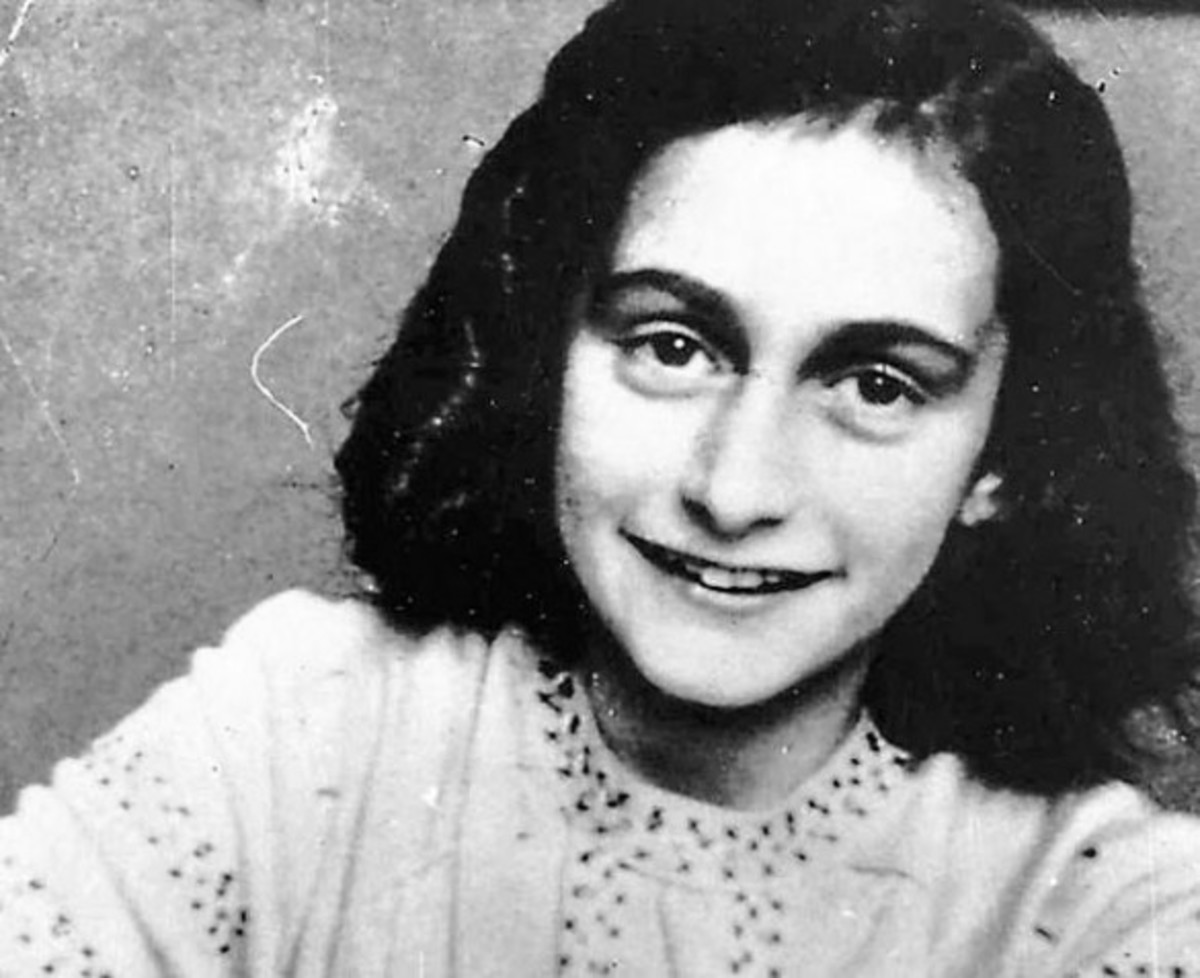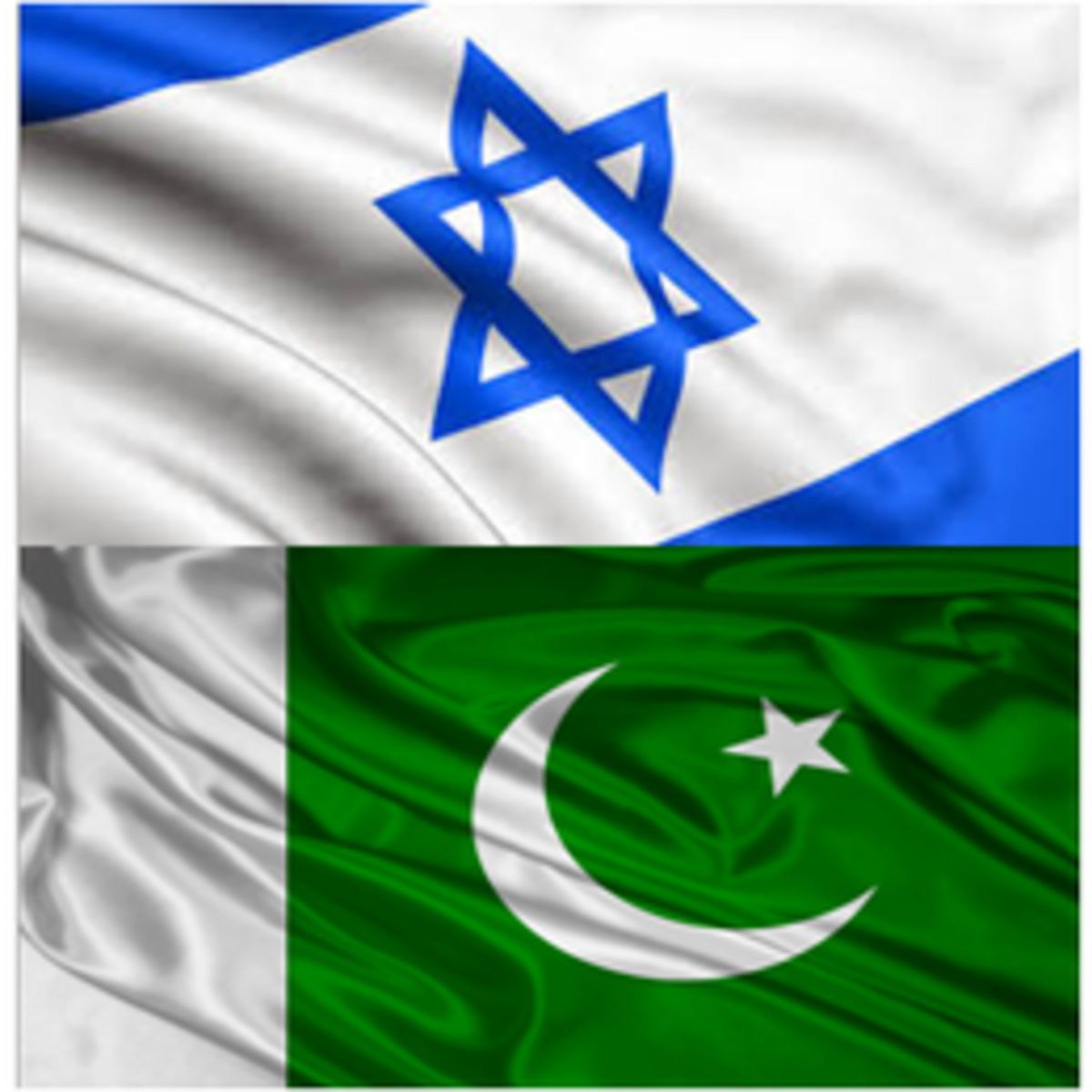Young Icons of Conflict: Examples of How Children Become Symbols of World Events
When world events happen, often times people look to an individual to encompass what the event was about: a face. These people aren’t usually predetermined, but are often obscure and somehow rises to the moment. Of the many types of people who have done this, the most impactful have unfortunately been children.
Even the most hardcore of societies of the past have viewed children with a type of inherent innocence that needed to be shaped and molded. More so within the last two hundred years as the human race began the long and painful process of becoming more civilized from its brutal biases. There’s a view that children’s innocence somehow purifies the cause that they become the symbol for, because no one would dare question a child and anything that brings harm to that child must be evil.
Yet modern cynicism is starting to creep into that perspective. Political prejudice and comparisons to past, evil incarnations is something we try to avoid…while still acting on our prejudices.
There are three children who come to mind who seem to best embody the innocence and righteousness of their respective causes, and have become controversial points of conflict as well.
Anne Frank, Malala Yousafzai, and Ahed Tamimi.
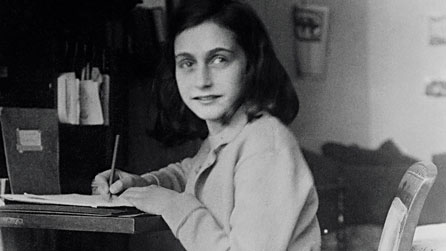
The First Blogger
Anne Frank could arguably be called the first blogger: the first person to use media to record and communicate the harsh realities of living in a place of conflict. Originally born in Frankfurt, Germany on June 12, 1920, her family eventually moved to Holland to escape the growing persecution in Nazi Germany against the Jews. When Holland was conquered, they were forced into hiding. Her mother received notice to be shipped off to a labor camp and the family consequently went into hiding in a secret room above her father’s office in 1942.
They were joined by another family in hiding, the Van Pels, and dentist, Fritz Pfeffer. Anne began writing down their daily lives in a diary given to her before they went into hiding. The book recorded the frustrations, anxieties, and little comforts of several people living in cramp quarters trying to evade discovery, while also maintaining the voice of young girl just starting to come into her own. Her last entry was on August 1st 1944, because days later they were betrayed and captured by the SS. It was later discovered that the young girl died of typhus at the Bergen Belsen concentration camp in March of 1945.
Her diary however had been saved and was published in 1947 by her father, Otto, who alone of the family had survived the war. Anne’s diary established her posthumously as both a talented and eloquent writer and won universal praise for it’s first hand account of living under Nazi rule and what it did to millions of people. Anne Frank continues to symbolize the suffering of Jews and those who suffered and died in Nazi-occupied Europe. Her diary is one of the best selling titles of all time. I remember I was required to read for my English class, some four decades after later.
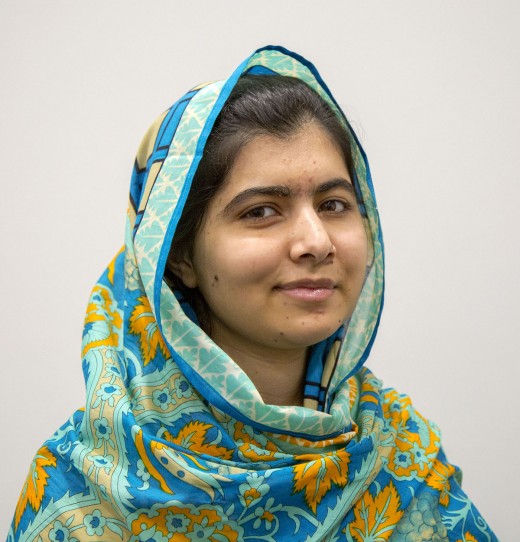
The Living Martyr
Decades later and half a world away, Malala Yousef attained similar notoriety in her native Pakistan and also nearly cost her life as well. Living in the Swat valley in the 2000’s, she and other girls of the area lived under the constant fear of the Taliban, who had forbidden Western education and actively opposed women education in particular. Malala started out like Frank, writing her ordeals in a diary when she was eleven years-old. Under the false name of Gul Makai, her own written experience detailed the fear and paranoia felt by her and other girls being under Taliban control while trying to educate themselves, dreaming of a better life. They had been attacking and closing many schools and many girls dropped out. There was only the faint hope they would one day be opened sometime in the future but the chances of that were slim to none.
The diary was given to a BBC reporter and published anonymously as The Diary of a Pakistani School Girl on a BBC Urdu blog site. It became a global success, telling the world what it was like to live in fear just to get an education and have little future beyond being a house wife. Yet Malala had also been very outspoken about her belief that girls had the right to be educated outside of her writings as well and it was eventually discovered she was the author of the diary. This made her a target.
When the Pakastini army launched their operation into the Swat valley, her family fled but eventually returned. However in 2012 on her way to school, her bus was stopped. Two armed men came on the bus and shot her in the head and wounded two other girls. Malala survived the attack and was eventually taken to a hospital in Birmingham, England thanks to the international outcry that went up at such an atrocious act. The Taliban and other militants in that country violently oppose secular education, this was well known. They were even known for carrying out attacks on girls they believed to be immoral. Even though people were conscious of their intense hatred, no one thought they would go as far as to intentionally murder a child.
Ironically their attempt to silence her backfired in ways no one foresaw. Malala was turned into something of a living martyr and though unable to return to Pakistan, has been loud in her continuing support of women’s education and as a advocate for peace. She became the youngest person to win the Noble Peace Prize in 2014. To many on the western world, Malala Yousef became an icon for the empowering of women across the world and the obstacles they faced.
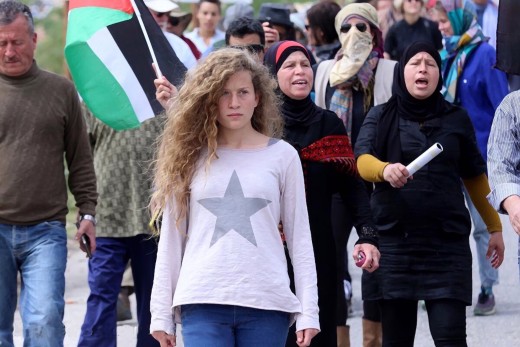
One Person’s Revolutionary, Another’s Terrorist
Ahed Tamimi is a peer of Malala Yousef in terms of a young, passionate girl becoming a symbol of resistance and courage. However, her struggle is located in the politically-volatile, Palestinian West Bank. This fact causes her rise to symbolic status to be burdened with controversy and also exposes a tendency on how quickly morals can shift when a symbol of morality and justice is erected against you.
From the village of Nabi Saleh, Ahed and her family live in land controlled by Israel: a status that the Palestinians and the most of the world called ‘occupied’ and that Israel considers legitimate. To go into the mind fuck that is the history and political quagmire of Palestine would distract from the point of this blog and take far too long. So suffice it to say that Israel took the territory during the 1967 Six-Day War and has controlled it ever since along with the people who have lived there for generations. Many people have died in both Israel and Palestine, and protests continue across the territories to this day as Palestinians refer to Israelis soldiers as ‘invaders’.
This is Ahed Tamimi’s world and her parents were active protesters against Israel. She had already gained notoriety when at age 11 when she was pictured forming a fist in an Israeli soldier’s face. Yet it was when a video of her slapping a soldier going viral and the subsequent arrest of her and her mother later that night, that garnered her true, international attention.
Like with Anne Franke and Malala Yousef, most of the attention was because she is sixteen years-old: not even an adult by most of the world’s standards. In our minds, that person is still somehow innocent or at the very least granted some automatic form of leniency. In a BBC interview on January 31st of this year, her father explained how Ahed expressed the outrage that all Palestinians’ felt, at their homes being occupied and frustration at the continuing violence against Palestinians.
During that same interview, a member of the Israeli Parliment , Oren Hazan, was also spoken to. When asked what went through his mind watching the video of Ahed slapping the soldier, he replied curtly that she would have ended up in the hospital had it been him being slapped. When he was reminded of her age, he countered that he did not see it that way because a slap by a child today will become a knife in a dead Israeli soldier tomorrow.(http://www.bbc.com/news/av/world-middle-east-42884885/ahed-tamimi-was-palestinian-teenager-s-slap-terrorism)
Although both her and her mother are due to be sentenced, many eyes across the world are now paying much closer attention to Israel at how it handles this: especially given their own history.
"While its true that the global community is infamous for having a short term memory, the power of children as symbols, even if momentary, has been and can be enough to move us out of apathy and provoke action."
Nay Sayers
Again, this is about children becoming symbols of major events and revolutions. A cause ignored by the rest of the world with images of refugees or homeless people, can quickly become galvanized when the image is that of a single child. This was seen in 2015 when the picture a Greek worker carrying the body of a dead, migrant child on the shores of the beach in Greece catapulted the refugee issue to the top of the que for many European nations. One of the ripples of that picture was Germany (ironically) becoming the first European nation to open its borders.
Another incident was the 2017 picture of a young, shell-shocked, Syrian boy covered in dirt and blood after a bomb attack during the ongoing Syrian war. Through the omnipresence of the internet and digital communication, the photo highlighted the plight and cost of people caught in the Russian and Syrian attacks as well as nations jockeying for political influence via the proxy war.
These pictures of children in extreme and hellish conditions are powerful because we feel the killing of children is a line too far. Images of chaotic protest and mass bodies piled up in the streets are strong, but one of a single child victimized by it, or doing what they can to fight against hits our morality at its core.
Moreover, it puts a very pale light on those responsible for their suffering. It’s not that hard for a nation or group, even Israel, to find themselves compared to Nazi Germany: considered the very lowest of how far human depravity can go. Those same nations or groups do all they can to either refute the association, or legitimize their actions because they were following some higher authority.
Anne Frank’s published diary was accused of being forged and a fraud for decades, claiming her father, Otto, was the true author. The Taliban accused Malala of spreading secular education, denigrating the society’s morals and culture, despite their own hyper-violent acts doing far more damage to the culture. And the Israeli government views Palestine as already their lands to begin with: the Palestinians are just living on it.
Even world sympathizers have been called to task. Some have addressed the percieved hypocrisy of the West in supporting empowered women embodied in Malala Yousef, while actively ignoring the cause of Ahed Tamimi who they say is just as courageous as Malala.
Judge and Jury
History and time is ultimately what decides who and what becomes immortalized as an icon. Anne Frank has already reached that status and Malala seems to be well on her way to becoming one. Ahed’s situation is already putting Israel under great scrutiny because of her age and their desire to keep away any comparisons to Nazi Germany.
While its true that the global community is infamous for having a short term memory, the power of children as symbols, even if momentary, has been and can be enough to move us out of apathy and provoke action. It puts our morals and ethics under the intense light of scrutiny and reveals where we really stand when it comes to verbal pontificating and practical goals.
The historical, political, and regional contexts of these three girls are as different as they are similar. However they have all caused the world to examine its values and call into questions actions that we are or are not willing to live with.


